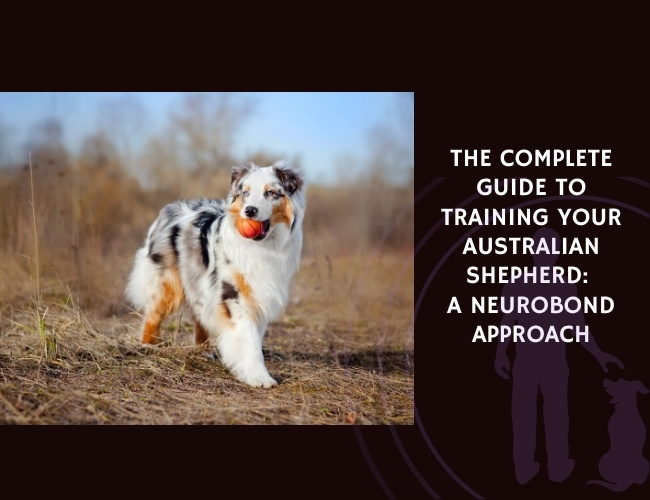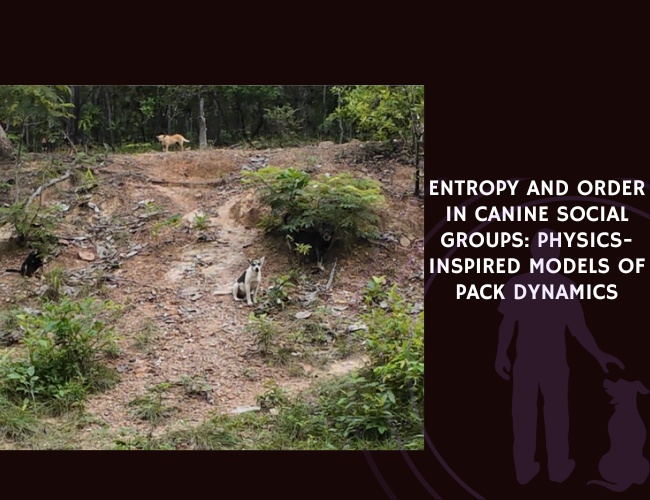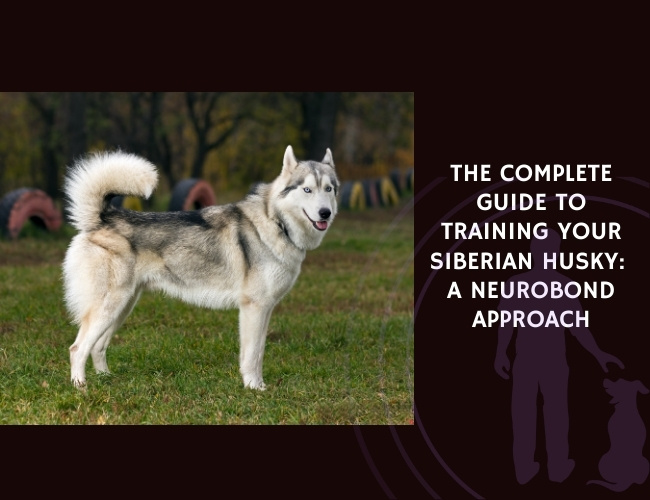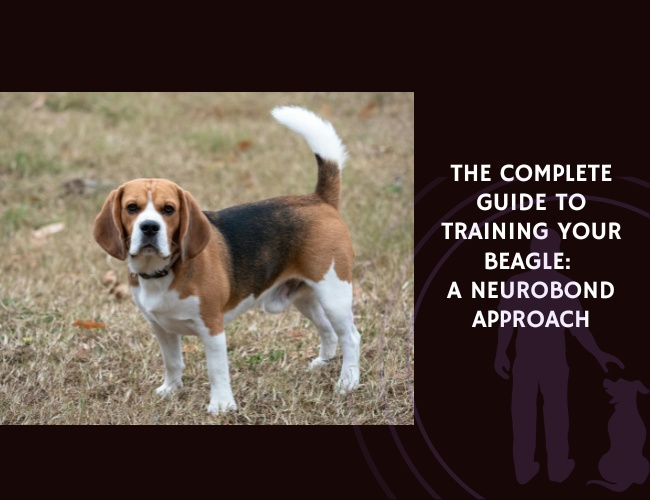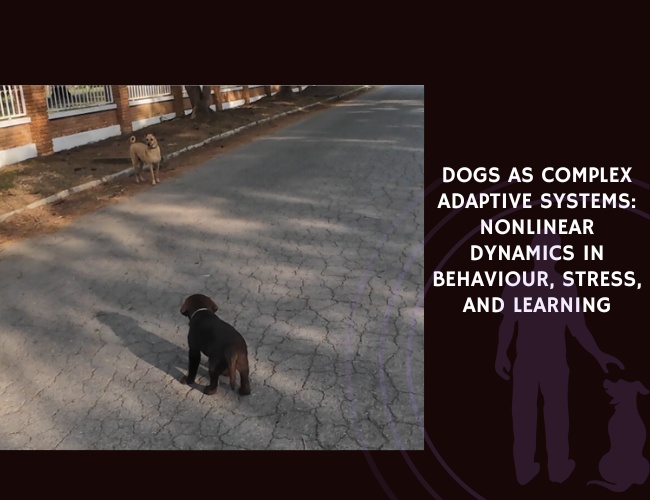Introduction: The Paradox of Modern Dog Ownership
In an age where you can instantly access expert advice about anything—from quantum physics to sourdough starters—we’re paradoxically witnessing an unprecedented crisis in canine welfare. Your smartphone contains more knowledge about dog behavior than entire libraries held just decades ago, yet our furry companions are suffering from neglect at alarming rates. (DOI)
This isn’t the obvious neglect you might imagine—no chains or empty bowls. Instead, it’s a subtle, insidious form of deprivation that’s hiding in plain sight in comfortable homes across the world. Recent field research spanning seven years and involving hundreds of dogs has revealed a startling truth: the majority of behavioral “problems” that lead to dogs being surrendered, rehomed, or euthanized stem from one simple root cause—chronic, soul-crushing boredom.
You might be thinking, “But my dog has toys, a yard, and regular meals!” Yet as we’ll explore together, meeting a dog’s basic physical needs while ignoring their profound psychological and cognitive requirements creates a perfect storm for behavioral disasters. Let’s dive deep into understanding how boredom transforms into frustration, and ultimately, into the aggression that breaks the human-animal bond. 🐾
Character & Behavior: The Neurological Dance of an Understimulated Mind
Understanding Your Dog’s Brain Chemistry
When you watch your dog peacefully napping on the couch, it’s easy to assume they’re content. But beneath that calm exterior, their brain is a complex neurochemical factory that requires specific inputs to function properly. Just like you need mental stimulation to avoid feeling restless or irritable, your dog’s brain craves engagement—and the consequences of deprivation run far deeper than simple restlessness.
The dopamine connection plays a crucial role here. Every time your dog engages in stimulating activities—sniffing new scents, solving puzzles, playing with you—their brain releases dopamine, the “feel-good” neurotransmitter. But here’s what happens when chronic boredom sets in: dopamine receptors begin to downregulate, meaning your dog needs increasingly intense stimulation just to feel normal. This neurological shift doesn’t happen overnight; it’s a gradual descent that many owners miss until aggressive behaviors emerge.
The stress hormone cascade compounds the problem. When mental needs go unmet, cortisol levels rise chronically. Unlike acute stress (like a thunderstorm) that passes, this persistent elevation fundamentally alters your dog’s emotional baseline. They become hypervigilant, reactive, and prone to misinterpreting neutral situations as threats. That friendly neighbor walking by? Suddenly a source of explosive barking. The doorbell? A trigger for frantic, uncontrollable behavior.
The Three Stages of Behavioral Deterioration
Through extensive field observation, researchers have identified a predictable progression that unfolds when dogs experience chronic understimulation. Understanding these stages helps you recognize where your dog might be on this continuum—and more importantly, how to intervene before reaching crisis point.
Stage 1: Silent Suffering This initial phase is deceptively quiet. Your dog might seem “well-behaved” or even “lazy.” They sleep excessively, show little interest in play, and generally appear subdued. Many owners mistake this for a calm temperament, but it’s actually learned helplessness—your dog has given up trying to meet their needs because past attempts haven’t worked. During this stage, you might notice:
- Excessive sleeping (more than 14-16 hours daily)
- Lack of enthusiasm for previously enjoyed activities
- Weight gain from inactivity
- Repetitive behaviors like excessive licking or tail-chasing
Stage 2: Frustration Emergence As internal tension builds, your dog begins showing signs of frustration. This is when many owners first realize something’s wrong, though they often misidentify the cause. The frustrated dog isn’t “being stubborn” or “dominant”—they’re desperately trying to communicate unmet needs. Common manifestations include:
- Destructive chewing, especially of high-value items
- Excessive barking at seemingly nothing
- Inability to settle, constant pacing
- Attention-seeking behaviors that escalate in intensity
- Resource guarding that wasn’t previously present
Stage 3: Aggressive Expression When frustration reaches a breaking point, aggression emerges—not as a personality flaw, but as the brain’s desperate attempt to create the intense stimulation it craves. Aggression provides a powerful neurochemical rush that temporarily alleviates the chronic understimulation. This explains why punishment often backfires; it adds stimulation without addressing the underlying deficit. Signs include:
- Lunging at other dogs or people
- Redirected aggression toward family members
- Unpredictable snapping or biting
- Barrier frustration (aggression through fences, windows)
- Escalating intensity with each incident
Vocalization & Communication: How Your Dog Expresses Hidden Distress
Decoding the Language of Boredom
Your dog is constantly communicating their internal state, but we often miss these crucial signals until they become impossible to ignore. Understanding the subtle vocalizations and body language of an understimulated dog can help you intervene before serious problems develop.
The evolution of vocal complaints follows a predictable pattern. What starts as occasional whining or sighing gradually escalates to demand barking, howling, and eventually aggressive vocalizations. Each escalation represents your dog’s increasing desperation to have their needs met. You might notice:
- Whining and sighing: These soft sounds are your dog’s first attempts to express discomfort. They often occur when your dog watches you, hoping for engagement.
- Demand barking: Sharp, repetitive barks directed at you or specific objects (leash, door, toy box) indicate frustration with unmet needs.
- Howling and wailing: Extended vocalizations suggest deep emotional distress, often occurring when left alone or excluded from activities.
- Growling and snarling: These warning signals indicate your dog is approaching their breaking point, where frustration transforms into defensive aggression.
Body language tells a parallel story. The understimulated dog’s posture gradually shifts from relaxed to tense, with specific markers indicating their internal struggle:
The relaxed tail that once wagged freely becomes stiff and still. Soft eyes harden into a fixed stare. The play bow disappears, replaced by rigid positioning. These changes happen so gradually that many owners don’t notice until their once-friendly dog is labeled “aggressive” by trainers or veterinarians.
The Misunderstood Messages
One of the most heartbreaking aspects of canine boredom is how frequently their communication attempts are misunderstood or punished. When your dog brings you their leash for the tenth time today, they’re not being “pushy”—they’re desperately trying to tell you something’s wrong. When they bark at every passing car, they’re not being “territorial”—they’re creating stimulation where none exists.
Did you know that many dogs labeled as “reactive” are actually suffering from chronic understimulation? Their overreaction to normal stimuli isn’t aggression—it’s their brain’s attempt to squeeze every drop of excitement from an otherwise empty existence. This explains why traditional “correction-based” training often fails; it suppresses the symptom without addressing the cause. 🧠
Training & Education: Reframing “Problem” Behaviors
Why Traditional Training Fails the Bored Dog
You’ve probably encountered the standard advice: “Show them who’s boss,” “Don’t reward bad behavior,” “Use a firm ‘no.'” But here’s the uncomfortable truth—these approaches often worsen the problem when dealing with understimulated dogs. Why? Because they focus on suppression rather than fulfillment.
The punishment paradox creates a particularly vicious cycle. When you punish a bored dog’s attempts to self-stimulate (like destructive chewing or excessive barking), you’re removing their coping mechanisms without providing alternatives. This increases internal pressure until it explodes in more severe ways. Many dogs who “suddenly” bite without warning have actually had their warning signals systematically punished away.
Quick-fix training programs promise rapid results but deliver long-term disasters. These programs often use aversive tools (shock collars, prong collars, spray bottles) to create immediate compliance. While your dog might stop the unwanted behavior temporarily, their underlying need remains unmet. The frustration doesn’t disappear—it goes underground, building pressure until it erupts in ways that surprise and frighten owners.
Building a Fulfillment-Based Training Approach
Instead of asking “How do I stop this behavior?”, the question becomes “What need is my dog trying to meet?” This fundamental shift transforms training from a battle of wills into a collaborative problem-solving process.
Mental enrichment as prevention forms the foundation of effective training. Before addressing any “problem” behavior, ensure your dog’s cognitive needs are met through:
- Scent work: Hide treats or toys around your home, encouraging natural foraging behaviors. Start simple and gradually increase difficulty.
- Puzzle feeders: Transform mealtime from a 30-second gulp into a 15-minute mental workout. Rotate different puzzles to maintain novelty.
- Training games: Teach new tricks not for obedience, but for mental stimulation. Even five minutes of learning creates significant cognitive engagement.
- Novel experiences: New walking routes, different surfaces to explore, varied social interactions—novelty is crucial for brain health.
Addressing existing behaviors through enrichment requires patience but yields lasting results. That dog who barks incessantly at the window? They need a job. Teach them to “check” the window on cue, then report back to you for a reward. The dog destroying your couch? They need appropriate outlets for their natural behaviors—digging boxes, shredding stations, designated destruction toys that you rotate regularly.
Performance & Activities: Meeting Your Dog’s Athletic Potential
The Exercise Myth: Why Your Daily Walk Isn’t Enough
“A tired dog is a good dog”—you’ve heard this phrase countless times. But what if we told you that physical exhaustion without mental stimulation actually worsens behavioral problems? Many owners unknowingly create what researchers call “athletic prisoners”—dogs who are physically fit but psychologically deteriorating.
The difference between tiredness and fulfillment is crucial to understand. A dog who’s been running on a treadmill for an hour might be physically exhausted, but their brain remains understimulated. This creates a fit but frustrated animal—imagine being forced to run marathons while being denied books, conversation, or any mental engagement. You’d quickly become irritable and reactive, despite your physical fitness.
Your Border Collie who gets two hours of fetch daily but still destroys your home? They’re not under-exercised—they’re under-stimulated. That German Shepherd who runs beside your bike every morning but remains reactive to other dogs? Their body is tired, but their working brain is screaming for engagement.
Designing Species-Appropriate Activities
Every dog breed was developed for specific work, and these genetic programs don’t disappear just because your dog lives in suburbia. Understanding and honoring these innate drives transforms frustrated dogs into fulfilled companions.
For herding breeds (Border Collies, Australian Shepherds, Corgis), the drive to control movement runs deep. Without sheep, these dogs often attempt to herd children, cats, or even shadows. Provide appropriate outlets through:
- Treibball (pushing large balls into goals)
- Agility training that emphasizes precision and control
- “Urban herding” games where they move objects on cue
- Complex trick sequences that satisfy their need for detailed work
For hunting breeds (Labradors, Spaniels, Pointers), the sequence of search-find-retrieve is hardwired. Denying these behaviors creates profound frustration. Satisfy these needs through:
- Structured scent work and tracking
- Retrieve games with increasing complexity
- Hide-and-seek with favorite toys
- Swimming and water retrieval when possible
For guardian breeds (Rottweilers, Mastiffs, Great Pyrenees), the need to patrol and protect remains strong. Channel these instincts appropriately through:
- Structured “perimeter checks” during walks
- Teaching them to “watch” on cue, then release
- Confidence-building exercises that satisfy their protective nature
- Calm, controlled exposure to various environments
Nutritional Foundations: The Hidden Hunger Crisis
When “Complete and Balanced” Isn’t Really Complete
You diligently read labels, choose foods marked “premium,” and follow feeding guidelines exactly. Yet your dog might still be nutritionally starving—not for calories, but for bioavailable nutrients that actually support brain function and emotional stability.
The protein deception represents one of the most troubling findings from recent research. While dog food labels proudly proclaim high protein percentages, they don’t reveal protein quality or digestibility. Proteins from rendered meals, by-products, and plant sources might test high in laboratory analysis but provide minimal usable nutrition for your dog’s metabolism. This creates a paradox: dogs eating “high-protein” foods while experiencing protein deficiency symptoms including:
- Chronic anxiety and reactivity
- Poor impulse control
- Difficulty learning and retaining training
- Increased frustration threshold
- Compromised immune function leading to additional stress
The carbohydrate controversy adds another layer of complexity. Many commercial foods use corn, wheat, and soy as primary ingredients—not for nutritional value, but for manufacturing convenience and profit margins. These high-glycemic ingredients create blood sugar rollercoasters that directly impact behavior. Just as you might feel irritable when “hangry,” your dog experiences mood swings from nutritional instability.
Nutritional Strategies for Behavioral Wellness
Understanding the connection between diet and behavior empowers you to make changes that support your dog’s emotional stability. This doesn’t necessarily mean expensive prescription diets—sometimes simple adjustments yield profound results.
Reading beyond the marketing requires developing label literacy. Look for:
- Named meat sources (chicken, beef, salmon) as first ingredients
- Minimal processing indicators (whole meats vs. meals)
- Absence of artificial colors, flavors, and preservatives
- Transparent sourcing information
- Feeding trials rather than just formulation standards
Supplementing for brain health can provide additional support for dogs showing behavioral challenges. Consider:
- Omega-3 fatty acids for cognitive function and emotional regulation
- B-complex vitamins for neurotransmitter production
- Probiotics for gut-brain axis support
- L-theanine or other calming amino acids for anxiety reduction
Remember, nutritional changes take time to show behavioral effects—typically 6-8 weeks for full impact. Document changes carefully, as improvements often happen gradually. 🧡
Health Concerns: The Physical Manifestations of Psychological Distress
When Boredom Becomes Medical
The mind-body connection in dogs is profound, and chronic psychological stress from understimulation manifests in numerous physical ailments. Veterinarians often treat these symptoms without recognizing their psychological origins, leading to frustrating cycles of medical intervention without resolution.
Stress-induced medical conditions frequently seen in understimulated dogs include:
- Gastrointestinal disorders: Chronic diarrhea, vomiting, and inflammatory bowel disease often have stress components. The gut-brain axis means psychological distress directly impacts digestive health.
- Skin conditions: Excessive licking, hot spots, and allergic reactions worsen with stress. Many “allergic” dogs are actually manifesting psychological distress through their skin.
- Immune suppression: Chronic stress compromises immune function, leading to recurring infections, slow wound healing, and increased susceptibility to parasites.
- Compulsive disorders: Tail chasing, shadow chasing, excessive licking—these aren’t quirks but serious neurological conditions arising from chronic understimulation.
The medication trap emerges when these physical symptoms are treated without addressing underlying causes. Anti-anxiety medications, steroids, and antibiotics might provide temporary relief, but without environmental enrichment, problems resurface—often worse than before.
Breaking the Cycle: Holistic Health Approaches
Addressing your dog’s health requires looking beyond symptoms to root causes. This holistic perspective doesn’t mean rejecting traditional veterinary care—it means combining medical treatment with behavioral and environmental interventions.
Creating a therapeutic environment supports both physical and psychological healing:
- Establish predictable routines that reduce anxiety
- Provide quiet spaces for decompression
- Use calming music or white noise to mask triggers
- Ensure adequate sleep (but not excessive)
- Maintain consistent, positive social interactions
Monitoring and documenting helps identify patterns and progress:
- Keep a behavior diary noting triggers and responses
- Track physical symptoms alongside behavioral changes
- Document dietary changes and their effects
- Record exercise and enrichment activities
- Note any medication effects, both positive and negative
Lifestyle & Environment: Creating a Fulfilling Life
The Modern Dog’s Dilemma
Your dog’s ancestors worked alongside humans for thousands of years—herding, hunting, guarding, pulling sleds. These weren’t just jobs; they provided purpose, mental stimulation, and deep satisfaction. Today’s dogs face an existential crisis: bred for work but living in enforced retirement from puppyhood.
The suburban paradox particularly affects dogs. Large yards seem ideal, but without structured activity, they become beautiful prisons. Dogs don’t self-exercise or self-entertain effectively—they need guidance, interaction, and purpose. That acre of fenced grass means nothing if your dog spends it lying by the door, waiting for something interesting to happen.
Indoor living challenges compound the problem. Modern homes, designed for human comfort, often lack canine-appropriate stimulation:
- Smooth floors provide no textural variety
- Climate control eliminates seasonal changes
- Sound insulation removes environmental information
- Visual barriers (walls, fences) limit observation opportunities
- Sanitized environments lack interesting scents
Enriching Your Dog’s World
Transforming your living space into a canine paradise doesn’t require major renovations—small, thoughtful changes can dramatically improve your dog’s quality of life.
Creating exploration zones throughout your home:
- Rotate toys weekly, storing some while others are available
- Hide treats in different locations daily
- Set up snuffle mats or treat-dispensing toys in various rooms
- Create texture paths using different materials (carpet, tile, grass mats)
- Install window perches for environmental observation
Establishing daily rituals that provide structure and anticipation:
- Morning “sniff walks” where your dog chooses the route
- Midday training sessions focusing on fun, not obedience
- Evening puzzle feeder dinners
- Bedtime hide-and-seek games
- Weekend adventure outings to new locations
Social enrichment addresses your dog’s need for appropriate interaction:
- Regular playdates with compatible dogs
- Structured interactions with various people
- Exposure to different environments and situations
- Opportunities to observe (not necessarily interact with) novelty
- Participation in dog sports or group classes
Senior Care: Preventing Cognitive Decline Through Engagement
The Aging Brain’s Special Needs
As your dog enters their golden years, the temptation to “let them rest” can actually accelerate cognitive decline. Senior dogs need mental stimulation more than ever—their aging brains require regular exercise to maintain function, just like their aging bodies need appropriate physical activity.
Cognitive Dysfunction Syndrome (CDS) affects a significant percentage of senior dogs, but early intervention through mental enrichment can slow or prevent its progression. Signs often mistaken for “normal aging” include:
- Disorientation in familiar places
- Changes in sleep-wake cycles
- Decreased interest in play or interaction
- House training regression
- Anxiety or confusion at night
Use it or lose it applies to canine cognition just as it does to human brain function. Regular mental challenges promote neuroplasticity—the brain’s ability to form new neural connections throughout life. This means your 12-year-old dog can still learn new tricks, and more importantly, should be learning them regularly.
Adapted Enrichment for Senior Dogs
Tailoring activities to your senior dog’s abilities ensures they remain engaged without becoming frustrated or exhausted.
Gentle mental challenges appropriate for seniors:
- Simplified puzzle feeders that don’t require excessive physical manipulation
- Short, positive training sessions teaching new cues
- Scent games that rely on their still-powerful noses
- “Find it” games with treats hidden at accessible heights
- Social interactions with calm, familiar dogs
Environmental modifications that support continued engagement:
- Non-slip surfaces to increase confidence during activities
- Raised feeders to make puzzle toys more accessible
- Softer toys that are easier to manipulate
- Shorter but more frequent enrichment sessions
- Warmth and comfort during activities to reduce joint discomfort
Remember, mental stimulation for seniors isn’t about exhaustion—it’s about maintaining cognitive function and emotional well-being through appropriate, enjoyable challenges. 🐾
The Hidden Crisis: Shelter Statistics and the Invisible Suffering
Beyond the Numbers: Understanding the True Scope
When you read that behavioral issues are the leading cause of shelter surrenders, you’re seeing only the visible tip of a massive iceberg. For every dog that enters a shelter system, countless others endure lives of quiet desperation in backyards, garages, and even comfortable homes where their psychological needs remain unrecognized.
The documented crisis reveals alarming patterns:
- 40% of dogs surrendered to shelters cite “behavioral problems” as the primary reason
- 96% of these dogs have never received professional behavioral support
- 85% lived in homes where basic physical needs (food, shelter, medical care) were met
- Only 10% of surrendered dogs had genuine aggression issues—the rest displayed frustration-based behaviors
The invisible majority represents an even larger population:
- Dogs living in yards, seen by neighbors but never walked
- Apartment dogs whose owners work 12-hour days
- Rural dogs chained or penned “for their safety”
- Family pets relegated to basements after baby arrives
- Senior dogs deemed “too old” for activities
These dogs never enter statistics, yet they suffer profoundly from chronic understimulation. Their owners aren’t necessarily cruel—they’re uninformed, overwhelmed, or convinced that meeting physical needs is sufficient.
Breaking the Silence: Recognition and Action
Acknowledging this hidden crisis is the first step toward addressing it. Many well-meaning owners simply don’t recognize the signs of psychological suffering in their dogs, having normalized behaviors that actually indicate distress.
Community-level interventions can help:
- Education programs that emphasize mental enrichment
- Support groups for overwhelmed owners
- Resource sharing for enrichment ideas and tools
- Volunteer programs pairing dogs with activity partners
- Judgment-free assistance for struggling owners
Individual responsibility means honestly assessing whether you’re meeting your dog’s psychological needs. This isn’t about perfection—it’s about recognition and incremental improvement. Even small changes can dramatically impact your dog’s quality of life.
Practical Solutions: Your Action Plan for Change
Starting Where You Are
Feeling overwhelmed by everything your dog needs? You’re not alone, and perfection isn’t the goal. Implementing even a few enrichment strategies can begin reversing the boredom-frustration-aggression pipeline. Let’s create a practical, achievable plan that fits your real life.
Week 1-2: Assessment and Basic Enrichment
- Document your dog’s current routine and behaviors
- Introduce one new enrichment activity daily (even 5 minutes counts)
- Start using puzzle feeders for at least one meal
- Add a 10-minute training session focusing on fun tricks
- Create a simple scent game using treats and cardboard boxes
Week 3-4: Building Momentum
- Establish a morning “sniff walk” routine
- Rotate toys, keeping only 3-4 available at once
- Introduce a new texture or surface for exploration
- Schedule a playdate or positive social interaction
- Begin documenting behavioral changes you observe
Month 2: Expanding and Refining
- Assess which activities your dog enjoys most
- Increase complexity of successful activities
- Address any nutritional concerns identified
- Join a dog sport or training class if possible
- Connect with other owners for support and ideas
Month 3 and Beyond: Sustainable Enrichment
- Establish daily, weekly, and monthly enrichment routines
- Continue documenting progress and adjusting approaches
- Share successes to inspire other owners
- Recognize that enrichment is lifelong, not a temporary fix
Troubleshooting Common Challenges
“I don’t have time” – Start with meal times. Simply scattering kibble in grass or using a puzzle feeder adds enrichment without extra time investment.
“My dog isn’t interested in toys or games” – Begin with their strongest motivator (usually food) and gradually build interest. Some dogs need to learn how to play.
“I’ve tried everything and nothing works” – Behavior change takes time—often 6-8 weeks for noticeable improvement. Document small changes and celebrate incremental progress.
“My dog is too old/young/disabled” – Every dog can benefit from appropriate enrichment. Adapt activities to their abilities rather than eliminating them entirely.
Conclusion: Is Your Dog Living Their Best Life?
As we reach the end of our exploration into the boredom-frustration-aggression pipeline, it’s time for honest reflection. The research is clear: countless dogs are suffering not from lack of love, but from lack of understanding about their fundamental needs. The question isn’t whether you care about your dog—of course you do, or you wouldn’t be reading this. The question is whether that care translates into meeting their psychological and cognitive needs.
The paradox of our information age—having unlimited access to knowledge while failing to apply it—extends beyond dog ownership into many aspects of modern life. But unlike other areas where inaction might be merely inefficient, our failure to meet our dogs’ mental needs causes genuine suffering. These aren’t just pets; they’re sentient beings with complex emotional lives, trapped in environments we control completely.
The path forward is clear, even if it isn’t always easy:
- Recognize boredom as a serious welfare concern, not a minor inconvenience
- Understand that behavioral “problems” are usually symptoms of unmet needs
- Commit to daily mental enrichment as non-negotiable as food and water
- Address nutrition as foundation for behavioral wellness
- Create environments that honor your dog’s species-specific needs
- Seek support when overwhelmed rather than surrendering to shelters
Your dog’s transformation won’t happen overnight. Years of understimulation create deep patterns that require patient, consistent intervention to resolve. But every puzzle solved, every new scent explored, every trick learned is a step away from frustration and toward fulfillment. You might not see dramatic changes immediately, but your dog feels them—in reduced anxiety, increased confidence, and genuine contentment.
The ripple effect extends beyond your individual dog. When you prioritize mental enrichment, you model responsible ownership for others. When you share your successes, you inspire change. When you support struggling owners without judgment, you prevent surrenders. Each enriched dog represents not just individual welfare improvement, but cultural shift toward recognizing and meeting the psychological needs of our canine companions.
Did you know that dogs living enriched lives not only display fewer behavioral problems but actually live longer? The stress reduction from adequate mental stimulation impacts everything from immune function to cognitive longevity. By investing in your dog’s mental health today, you’re adding quality years to their life—years filled with joy rather than frustration, engagement rather than boredom, partnership rather than problems.
The hidden crisis of canine boredom doesn’t have to remain hidden. With awareness, commitment, and practical action, we can transform the lives of dogs everywhere—starting with the one looking at you right now, hoping for something interesting to happen. They’ve been waiting patiently while you read this.
Now it’s time to show them you understand. 🧡
Ready to transform your dog’s life? Start today with just one enrichment activity. Your dog’s journey from boredom to brilliance begins with a single step—and they’re counting on you to take it.


